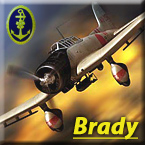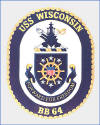mdiehl
Posts: 5998
Joined: 10/21/2000
Status: offline

|
quote:
The same is true the other way. A Ki-84 being fed 100 octane fuel will not run better; it will knock. And fly slower. If at all. -
That's not correct. Increasing the octane reduces the volatility at lower pressure thereby preventing premature detonations (that which you call "knocking"). In a lower pressure piston you might not get the full use of the fuel because all of it may not burn, hence less power. The Ki-84, however, had a relatively high pressure engine and was better served by 100 Octane. The basic problem that the Japanese ran up against was that they could design and, to a certain degree build (highly unreliable) high pressure engines but were unable to provide fuel that was up to the task of running them. Of course, you already know this since you are very familiar with the output of the HA-25 series radials and are of course aware that the only way to make a radial engine more powerful is to add cylinders (which is suboptimal because it increases weight) or increase combustion pressure.
quote:
- This is also incorrect. The prototype Ki-84 did 390 or so. The pre-production did 400, the main production version averaged 410 and on a well maintained version could do 420mph. Or maybe 427mph! -
Your comment is disingenuous. The Ki-84-Ia (the main production version so to speak) with the Ha-45-12 (several engines were used in the Ki-84-I this is the one with 1925 Hp output.. the most in the Ki-84-1 series) had a top flight test speed of 390 mph with armament. Sources (I recommend you see the B&N Encyclopedia of World Aircraft or Aircraft of WW2, or if you like the Smithsonia A&S Musuem website, or the following: http://www.wwiitech.net/main/japan/aircraft/ki-84/). There were no flight tests of a Ki-84-I with its guns installed where the aircraft exceeded 390 mph. 388 was more typical, but what's 2mph in a sim.
The Ki-84-II (some variants) used the slightly more powerful Ha-45-25 rated for 2000 HP. Unfortunately the Ki-84 significant quantities of wood (an effort to save strategic materials) that also increased weight. With that and the added weight from guns (4x20mm or 2x20mm and 2x30mm in lieu of 2x12.7 and 2x20mm) the Ki-84-II was actually slower than the Ki-84-I.
quote:
This is true, but every plane or tank is a tradeoff among several choices. Also, you need to remember that, while it is true that the Ki-84 lost turn rate above 300mph, your assumptions about the need fr high speed turns is incorrect. While a P51 flying above 300mph may turn just as fast as a Ki-84 flying below 300mph the radius of the P51's turn will be larger and the Ki-84's guns would be on target sooner than the P51's.
That's just irrelevant. Let's assume a Ki-84 six o clock level on a P-51 at the start of a reaction-counter-reaction sequence of events. Given the two aircraft flying at the same speed in excess of 300 mph the one with the lower time to turn will turn ahead of the opponent. The only important measurement here is arc-seconds of turn per unit of time. Unfortunately, despite the Ki-84s weight, its poor high-speed handling characteristics overcome any bonus it gets for being a lighter aircraft. The problem is compounded, severly, by the fact that the Ki-84 had a lousy roll rate. Every turn starts with a roll. So even assuming that the Ki-84 starts the engagement CLOSE to the P-51 (why it's not already shooting is a moot point since we're merely talking about maneuverability), if the P-51 reacts the Ki-84 cannot bring its guns to bear UNLESS it completes more arc-seconds of turn faster than the P-51 which, as many many sources stipulate, it cannot do.
quote:
When i did some government work i watched a group of F16's with dummy missles dogfight a squad of British F2's with only guns. The Americans did what they were taught and tried to fight at high speeds while the British fought at low speeds and low altitude. The Americans lost every plane as 'kills' while the British lost 1 aircraft.
Assuming that that is true, and that the US pilots were not green, it is still irrelevant. All your boys did was replicate the beam defense in a circumstance in which the F-16s were presumed to be handicapped by a dearth of guns. Speed generally wins. That was true in WW2, when superior turning-at-low speed a/c built in Japan such as the A6M2 suffered horrendous combat loss ratios in the face of the opposition, and it has been the driving principle in every nation's a/c design for GUN combat since WW2. An F16 will in most circumstances beat an F2 if the F-16 uses guns and "boom and zoom."
Very similar tests were, indeed conducted by the AVG vs the RAF in Burma in 1942. The F2 (Brewster Buffalo) was favored by RAF pilots because of its superior low-speed turning characteristics. Erik Shilling shot the pants off the RAF pilots in several demonstration flights using the P-40s superior speed, against which the RAF pilots (even when operating in pairs) were unable to maintain a defense (see Charles R. Bond "A Flying Tiger's Diary"). There are SO many classic encounters, tests, and simulations that demonstrate the superiority of the energy aircraft that your observation, while interesting perhaps as a lesson in how to let an F-2 beat a superior aircraft, is of no particular significance.
< Message edited by mdiehl -- 6/10/2004 4:57:00 PM >
_____________________________
Show me a fellow who rejects statistical analysis a priori and I'll show you a fellow who has no knowledge of statistics.
Didn't we have this conversation already?
|
 Printable Version
Printable Version













 :
:

 New Messages
New Messages No New Messages
No New Messages Hot Topic w/ New Messages
Hot Topic w/ New Messages Hot Topic w/o New Messages
Hot Topic w/o New Messages Locked w/ New Messages
Locked w/ New Messages Locked w/o New Messages
Locked w/o New Messages Post New Thread
Post New Thread